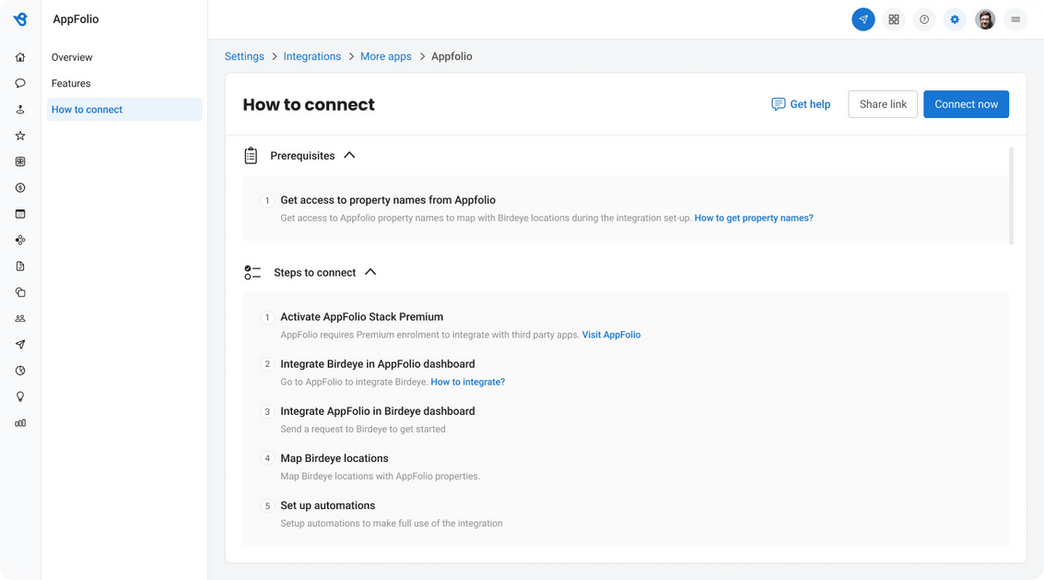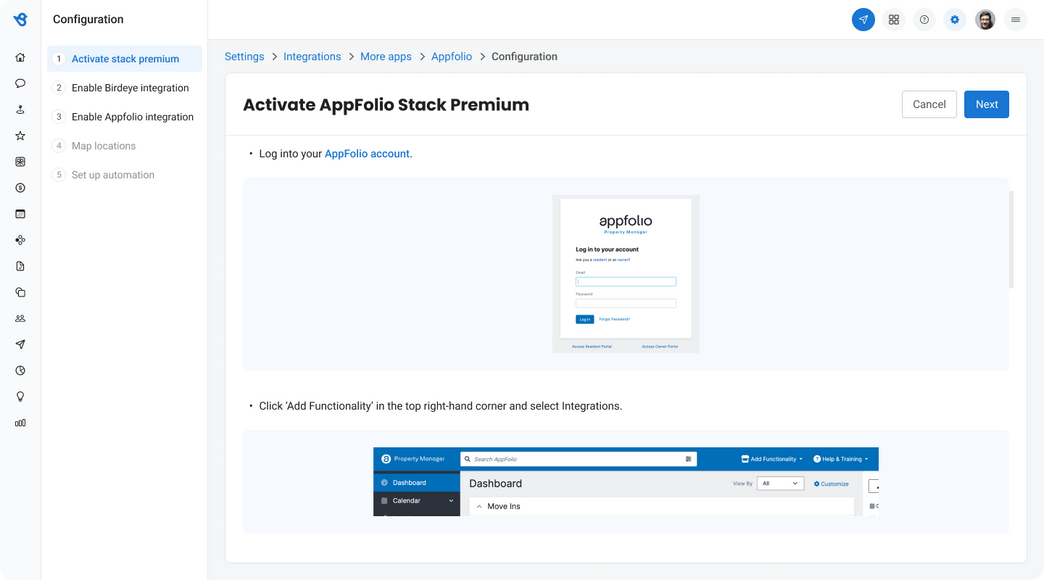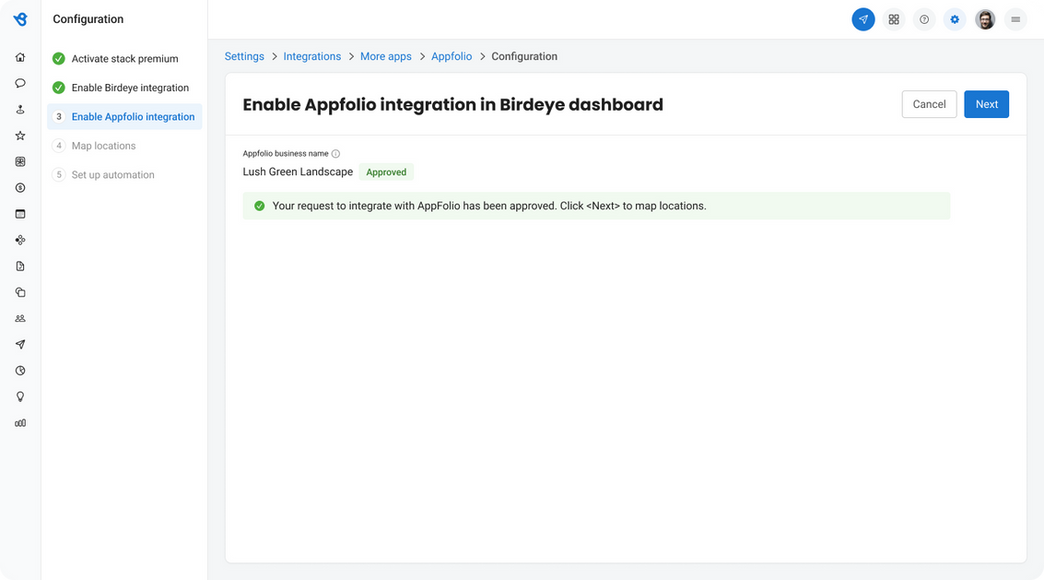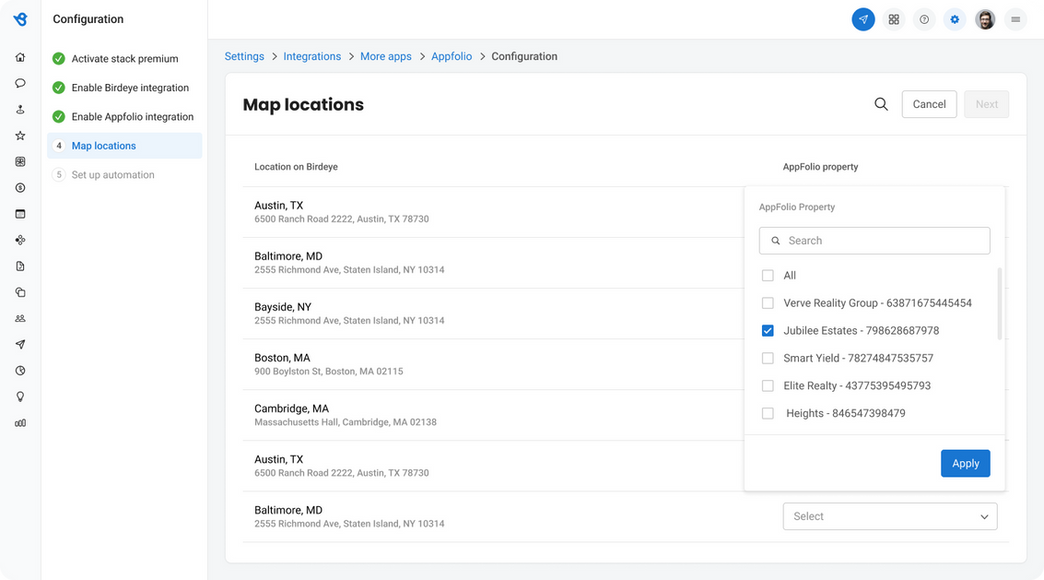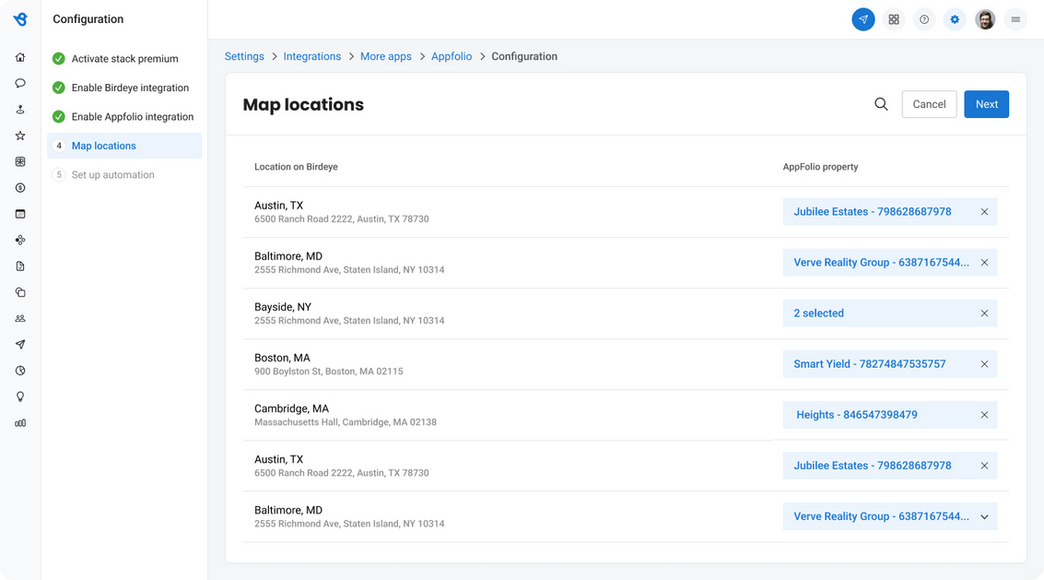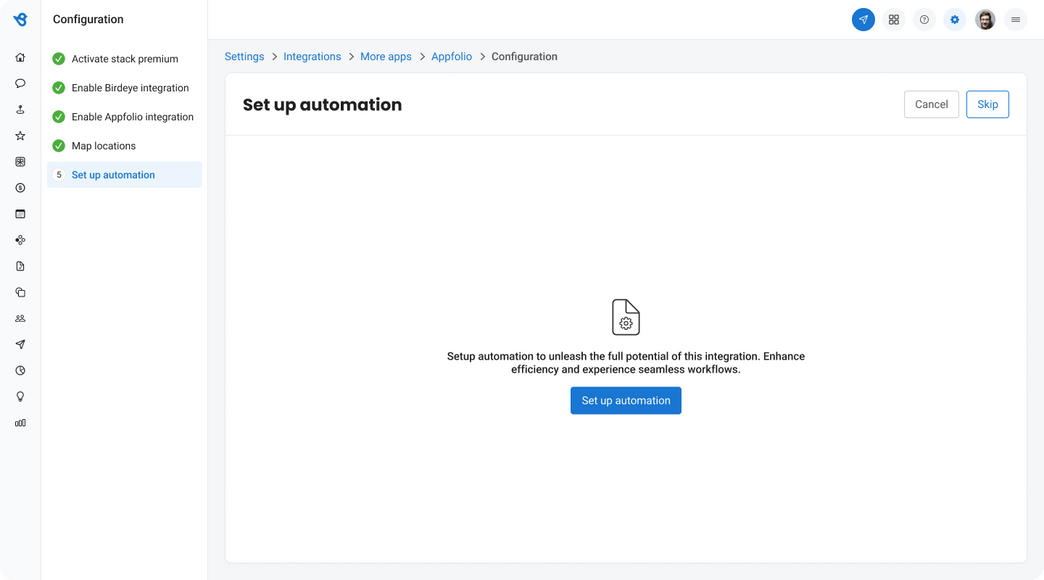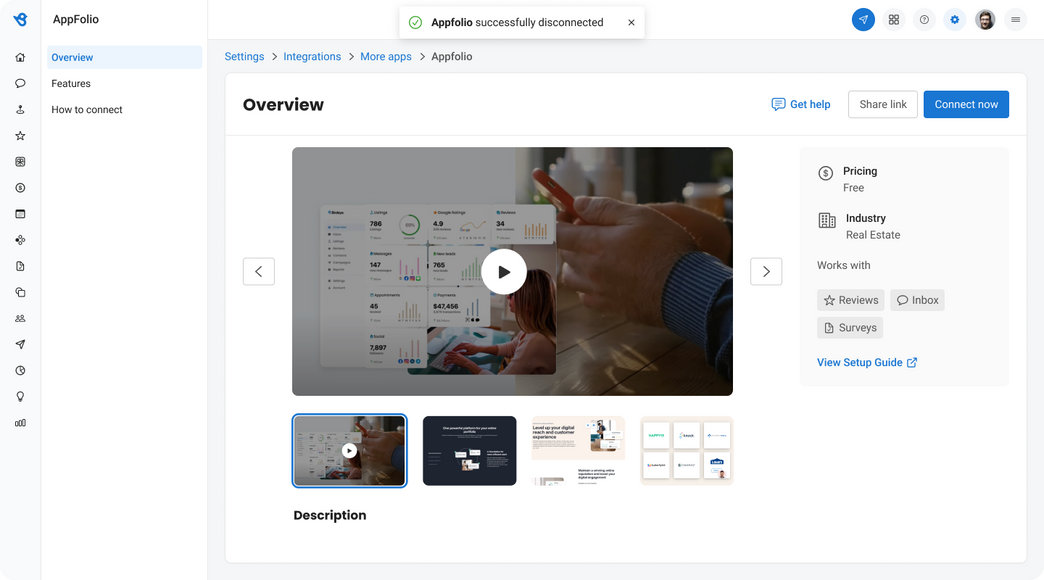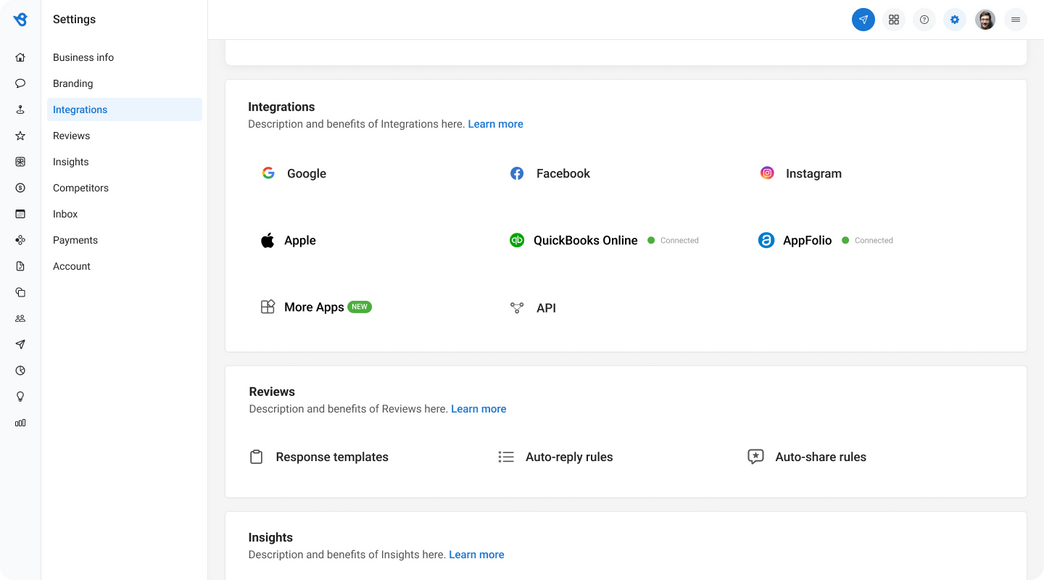Overview
The Self-Serve Marketplace is a
feature on the Birdeye platform
that empowers customers to
independently integrate
third-party applications.



SELF SERVE MARKETPLACE
DESIGNING INTUITIVE EXPERIENCES THAT DELIGHT AND ENGAGE USERS

PROBLEM STATEMENT
The current integration process requires multiple customer calls (30-40 minutes each) and significant setup time (30 minutes to 1 hour). Complex third-party app dependencies, like AthenaHealth, can take weeks to complete, adding further delays.
Time and Resource Intensive
Heavy involvement of the support team diverts resources from critical tasks, while low traffic and visitor engagement on the marketplace webpage hinder adoption, affecting overall growth opportunities and customer experience.
Limited Scalability and Growth
MY ROLE
I led the overall design and development of the Self-Serve Marketplace, ensuring smooth collaboration across teams and aligning the project with business goals.
Design Lead & Project Owner
1
I conducted comprehensive competitor research to identify market gaps, and then designed intuitive user interfaces and prototypes that were tested and refined with stakeholders.
Competitor Research & UX Designer
3
Working closely with project managers, I focused on understanding customer pain points, defining goals, and crafting solutions that addressed both user needs and business objectives.
Customer-Centric Strategist
2
I collaborated closely with developers to address queries, conducted thorough testing of the implemented design, and ensured the final product was user-friendly and ready for launch.
Developer Collaborator & QA Tester
4


Prototyping
During the design phase, we ensured that all identified pain points and opportunities were thoroughly addressed. Leveraging the Birdeye design system, we maintained consistency in design components and user interactions across the platform. Special attention was given to creating a clean, uncluttered, and intuitive interface, ensuring that users could easily navigate the integration process despite its inherent complexity. This approach not only enhanced usability but also reinforced the overall user experience, making the process feel simple and accessible.
Mid & High Fidelity Prototypes

Stakeholder Interviews
Customer Research
Competitor Analysis
Research
Identifying Key Bottlenecks
Through stakeholder interviews, user research, and competitive analysis, we pinpointed a major issue:
-
Current Process: Users must engage in multiple interactions with customer support, leading to a time-consuming process and low adoption rates for CRM integrations.

Competitor Advantage
Our competitors offer a fully self-serve marketplace where users can integrate CRMs directly on their website. This streamlined, user-friendly approach has led to:
-
Higher adoption rates for third-party apps
-
Increased revenue from integrations
-
A more efficient user experience
How might we enable users to integrate CRMs independently?
Introduce a fully self-serve marketplace that allows customers to integrate third-party apps seamlessly, eliminating the need for support team intervention.
How might we boost CRM adoption through an easier process?
Integrate promotional videos highlighting the features and benefits of third-party app integrations, driving higher adoption rates and educating users on the value these integrations provide.
How might we improve the CRM integration experience?
Implement a clear, step-by-step process where users can see both completed and upcoming steps, providing transparency and reducing confusion.
How might we reduce support interactions in the integration process?
Use information banners and hover messages to over-communicate, helping users navigate any potentially complex steps with ease.
Problem identification
User Personas & Pain points
HMW Questions
How might we improve the CRM integration experience?
Competitor Analysis
How might we reduce support interactions in the integration process?
How might we increase revenue with a self-serve marketplace?
How might we enable users to integrate CRMs independently?
Testing & Validation
Usability Testing
Heuristic Evaluation
Iteration Based on Feedback

"The loading time between steps was a bit slow, which made the process feel longer than expected."

"Some of the terminologies in the instructions were too technical for me."

"The integration I wanted wasn’t listed. Are there plans to add more options in the future?"

"I completed the integration, but I’m not sure if it’s working correctly."


Design
During the design phase, we ensured that all identified pain points and opportunities were thoroughly addressed. Leveraging the Birdeye design system, we maintained consistency in design components and user interactions across the platform. Special attention was given to creating a clean, uncluttered, and intuitive interface, ensuring that users could easily navigate the integration process despite its inherent complexity. This approach not only enhanced usability but also reinforced the overall user experience, making the process feel simple and accessible.
How might we boost CRM adoption through an easier process?
Ideation

THE GOAL
-
Build the self serve platform where our customer can integrate apps with very less intervention of support or onboarding team.
-
List all the integrations in marketplace on Birdeye website to increase integration awareness among prospects
-
Revenue generation channel with 90-100 new Leads per month and 15% increase in the integrations.
STREAMLINED CRM DISCOVERABILITY
Centralized CRM listing • Category-based organization • Search-enabled navigation • CRM descriptions • Request unlisted CRMs
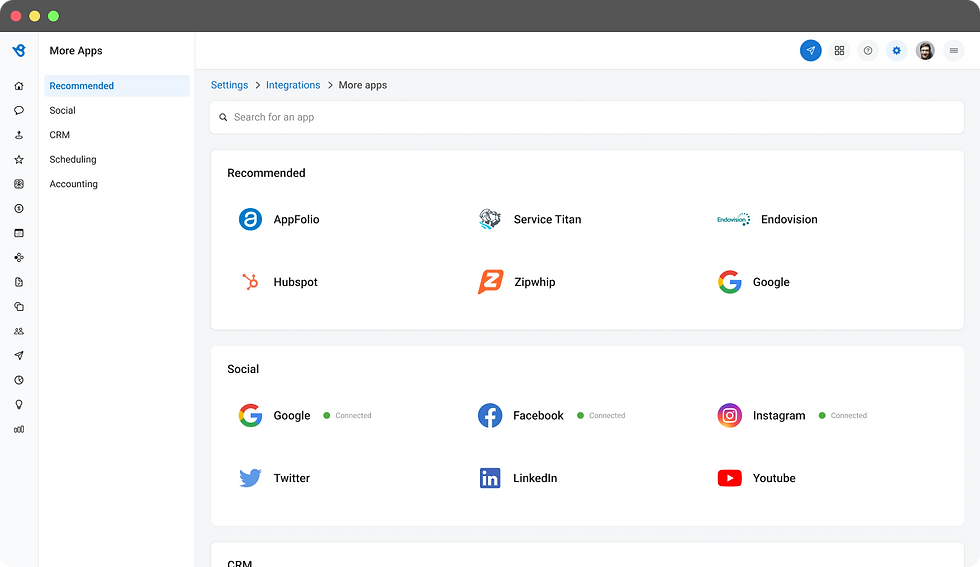


BIRDEYE MARKETPLACE

EASY STEP BY STEP PROCESS
Clear step numbering • Real-time status indicators • All steps listed in side navigation
PERFORMANCE TRACKING
Integration status monitoring • Automation activity insights • Track where CRM is running • View leads and contacts generated

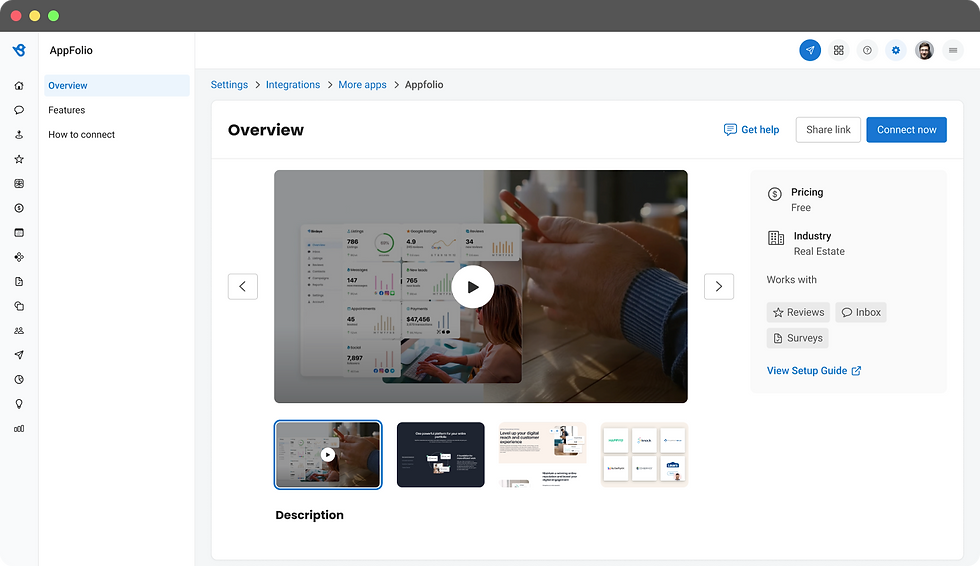
OVERVIEW PAGE
Detailed CRM information • Connection guide with videos & screenshots • Sidebar with pricing, industry, and usage info • Full CRM description on the page


Handholding the Customer

Clear communication at every step • Step-by-step breakdown with visuals • Banners and statuses to guide users • Sub-steps with screenshots for clarity
Integration flow
IMPACT

Customers who integrated their CRMs with Birdeye had an average GRR (Gross Revenue Retention) that was 12% higher than those who did not.
-
For example, in Q2’23, integrated accounts had a GRR of 76.3%, compared to 60.1% for non-integrated ones.
-
Over the period shown (Q3’22 to LTM Jun-23), CRM integrated customers consistently outperformed, with GRRs averaging above 82%, versus 69% for non-integrated.
Why it matters:
CRM integration increases platform stickiness. Customers who integrate are more deeply engaged and less likely to churn — leading to higher retention and more revenue for Birdeye.
THANK YOU FOR COMING ALONG ON THIS JOURNEY.
STEPS
TAKEN






